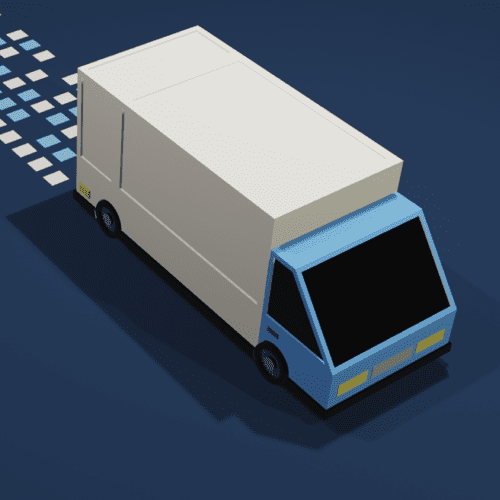What are Some of the Best Features Included in Dispatch Software?
The best dispatch software features leverage the power of artificial intelligence to plan & predict the best routes for your drivers. When managing a large fleet of trucks, it becomes mathematically impossible to compute every possible routing option without the help of technology. The more variables, the higher the number of possible route combinations to evaluate. Quickly, the number of solutions becomes astronomically high, and it becomes impossible for even an experienced dispatcher or route planner to create efficient routes relying solely on their best hunches. The best dispatch software has the computational power to not only plan the best routes but even adjust them in real-time. Wise Systems’ dispatch software provides value during every step of the delivery process from planning the route, to making the deliveries, to improving future routes by using data from recent deliveries.
The Importance Of Real-Time Data For Dispatch Software
Another important aspect of dispatch software is visibility. Being able to track drivers in real-time is essential for communication with both your team and your customers. Providing real-time ETAs, updates, and information to customers can strengthen that relationship. Meanwhile, having visibility into your driver’s day means a better understanding of the obstacles that are hurting efficiency, and the ability to more easily adapt to day-of issues.
Seamlessly Integrating Dispatch Software With Driver Tools
Wise Systems’ provides solutions for the dispatcher, the driver, and the customer. By integrating dispatch software solutions with driver tools, the benefits of both can be leveraged together. For any fleet, drivers are a huge wealth of information. Your drivers have useful information they can share from their day-to-day that can help plan more efficient routes. Our dispatch software leverages this knowledge by allowing drivers to share information across the team as well as providing them with tools like barcode scanning and driver notes to help make their job easier.
What Are The Benefits Of Automated Dispatch Software?
Compared to manual processes or outdated routing solutions, a fleet can expect to see significant business improvements after adopting new route optimization software:
- Reductions in late deliveries;
- Improvements in fleet utilization;
- Achieving higher levels of customer service,
- And savings in fuel and mileage costs.
Demo Wise Systems’ Fleet Management Dispatch Software
For more information about autonomous dispatch and routing systems, contact Wise Systems for a demo of our products that can help your fleet plan routes, adapt to day-of challenges, and make the most of your fleet’s data for future routing.
Other Frequently Asked Questions
What does autonomous dispatch and routing software do?
Autonomous dispatch and routing software is an automated system that coordinates the movement of people, goods, and services to improve fleet efficiency and utilization, improve customer service, minimize the time spent on route planning, and reduce late deliveries. These sophisticated software solutions leverage sophisticated algorithms, artificial intelligence (AI), and machine learning (ML) technologies to make optimized, software-driven decisions in real time.
What industries use autonomous dispatch and routing software?
A growing number of industries use autonomous dispatch and routing software, such as:
- Transportation and logistics
- Commercial fleets
- Emergency services
- Field services
- eCommerce retailers
- Ride-sharing systems
- Meal delivery applicationsWhat are the benefits of autonomous dispatch and routing software?
Companies can benefit in many ways from implementing autonomous dispatch and routing software. A few of the biggest advantages include:
- Optimizing resource allocation
- Improving fleet utilization
- Minimizing travel and delivery times
- Ensuring timely service
- Reducing operational costs
- Improving customer service
- Minimizing the time spent on route planning
- Making data-driven decisions based on multiple factors
What are the 5 levels of autonomous dispatch and routing?
The five levels of autonomous dispatch and routing, or six levels when considering the baseline of no automation, include:
- Level 0: Level 0 refers to traditional, 100% manual planning and route-building processes with no automation or optimization.
- Level 1: Many of today’s organizations are currently operating at Level 1. At this level, teams plan routes based on relevant available data such as historical customer volumes. Some automation is built into planning processes, such as incorporating known constraints (e.g., vehicle type, customer delivery windows) into annual or semi-annual plans.
- Level 2: At Level 2, software can conduct some processes automatically, such as planning critical functions daily while simultaneously managing constraints (e.g., vehicle type, customer delivery windows, vehicle availability, capacity). There’s little daily planning, although intervention is necessary to manage exceptions. At this level, route plans are updated daily based on learned data, and plans are specific to certain days of the week, drivers, customers, weather, product, or time of day. Companies operating at Level 2 realize benefits such as improved fleet utilization and significant gains in on-time percentages.
- Level 3: At Level 3, software automates the entire process, from initial order acceptance to inventory picking, driver assignment, vehicle loading, and delivery. Dispatchers are only required to manage exceptions. Level 3 systems automatically adjust drivers’ schedules in response to delays, real-time traffic and weather conditions, and changes made by the driver.
- Level 4: Level 4 dispatch and routing systems operate autonomously and are capable of managing most exceptions without dispatcher intervention. Overall, little to no manual involvement is required. These systems gather data over time, adapt in real time, and leverage accumulated data to create highly accurate future plans. Level 4 solutions support cost-effective on-demand delivery and are capable of accommodating dynamic pricing to adapt to customer demand and resource constraints.
- Level 5: A Level 5 automated dispatch and routing system provides fully autonomous scheduling and dispatching. These systems can support businesses in any industry, with no human involvement required to manage exceptions. Level 5 systems cover every possible use case. In addition to the capabilities of Level 4 systems, Level 5 automated dispatch and routing solutions can manage driver hours, reloading, multiple trips, and both owned and third-party assets.
Download our white paper, 5 Levels of Autonomous Dispatch and Routing, for more details on the capabilities and benefits offered by autonomous dispatch and routing solutions at each level.











